Measurement of system size dependence of directed flow of protons (anti-protons) at RHIC
Title: Measurement of system size dependence of directed flow of protons (anti-protons) at RHIC
PAs: Jinhui Chen, Aditya Prasad Dash, Huan Huang, Hao Qiu, Diyu Shen, Subhash Singha, Aihong Tang, Muhammad Farhan Taseer and Gang Wang
Target journal: Phys. Rev. Lett.
Abstract:
We present the rapidity dependence of directed flow (v1) and its slope (dv1/dy) for π±, K± and p(p̅) as a function of centrality in Au+Au and Isobar (Ru+Ru and Zr+Zr) collisions at √sNN = 200 GeV, and in U+U collisions at √sNN = 193 GeV, as measured by the STAR experiment at RHIC. The slope dv1/dy for p(p̅) and the difference Δ(dv1/dy) exhibit a clear system size dependence, with an ordering of U+U > Au+Au > Isobar (Ru+Ru and Zr+Zr), while total baryons (p + p̅) remain independent of system size. This is the first observation of system size dependence of the v1 and Δ(dv1/dy) of baryons. In contrast, the mesons (π± and K±), show no dependence on system size, consistent with previous findings at RHIC for inclusive particles [1]. A hydrodynamic model incorporating an inhomogeneous baryonic profile and electromagnetic field effects can explain the observed patterns in the data. The system-size dependence of Δ(dv₁/dy) for protons in central collisions is likely dominated by enhanced baryon stopping in larger systems, where electromagnetic fields play a negligible role. In contrast, mid-central and peripheral collisions may arise from a combination of baryon transport and electromagnetic field effects. These measurements of v₁ across different centralities and system sizes offer valuable insights into the strength of electromagnetic fields, the medium's electrical conductivity, the baryon deposition and transport properties of the QCD medium [2, 3].
References:
- STAR Collaboration, Phys. Rev. Lett. 101, 252301
- STAR Collaboration, Phys. Rev. X 14, 011028
- T Parida et al, arXiv: 2503.04660
Summary:
- We observed a system size dependent v1 and Δ(dv1/dy) for protons (antiprotons) among three different collision systems at similar collision energy
- In contrast, the mesons (pions and kaons) as well as total baryons (p + p̅) are found to be independent of system size
- These results will help understand baryon deposition (such as baryon stopping mechanism) in heavy-ion collisions and provide constraint on baryon transport (such as baryon diffusion)
- These results will provide constraint on the strength and lifetime of the electromagnetic field as well as the electrical conductivity of the QGP
Proposed Figures:
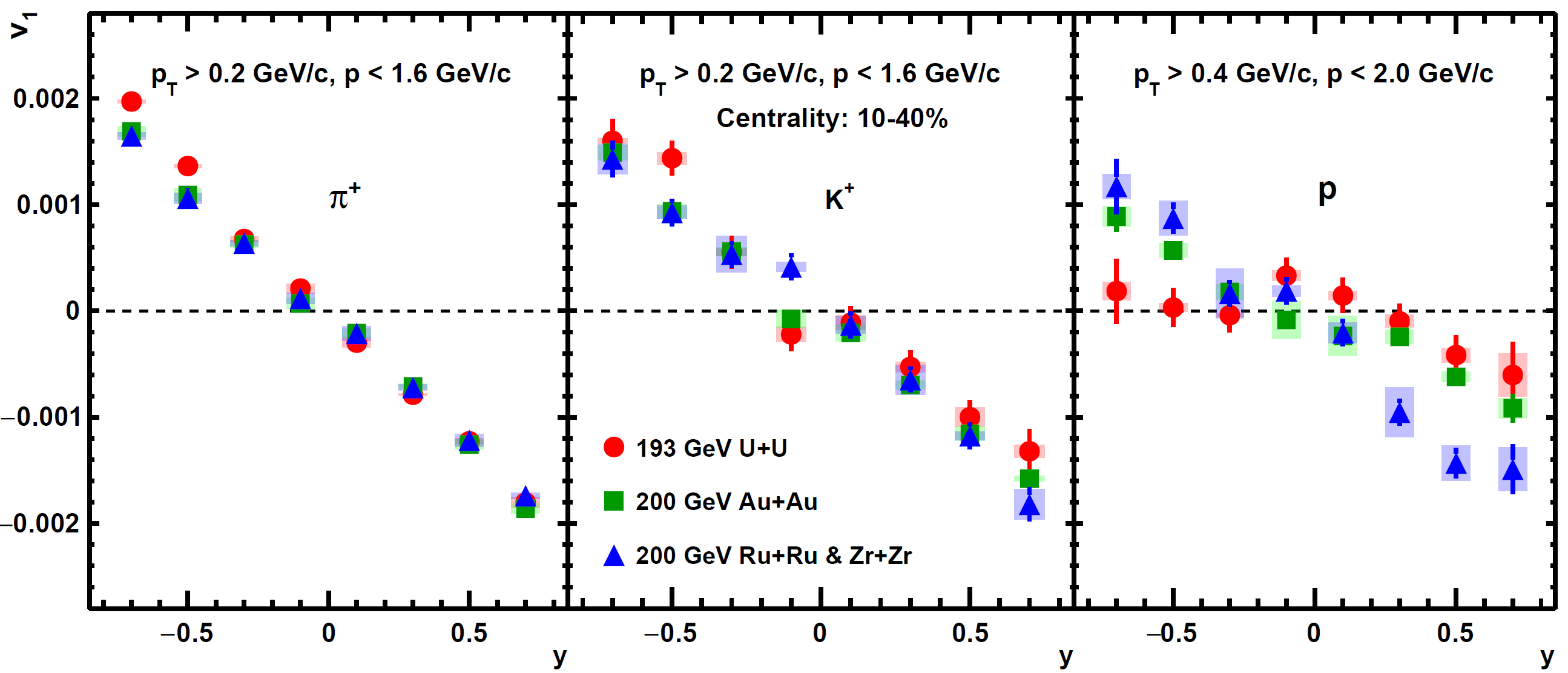
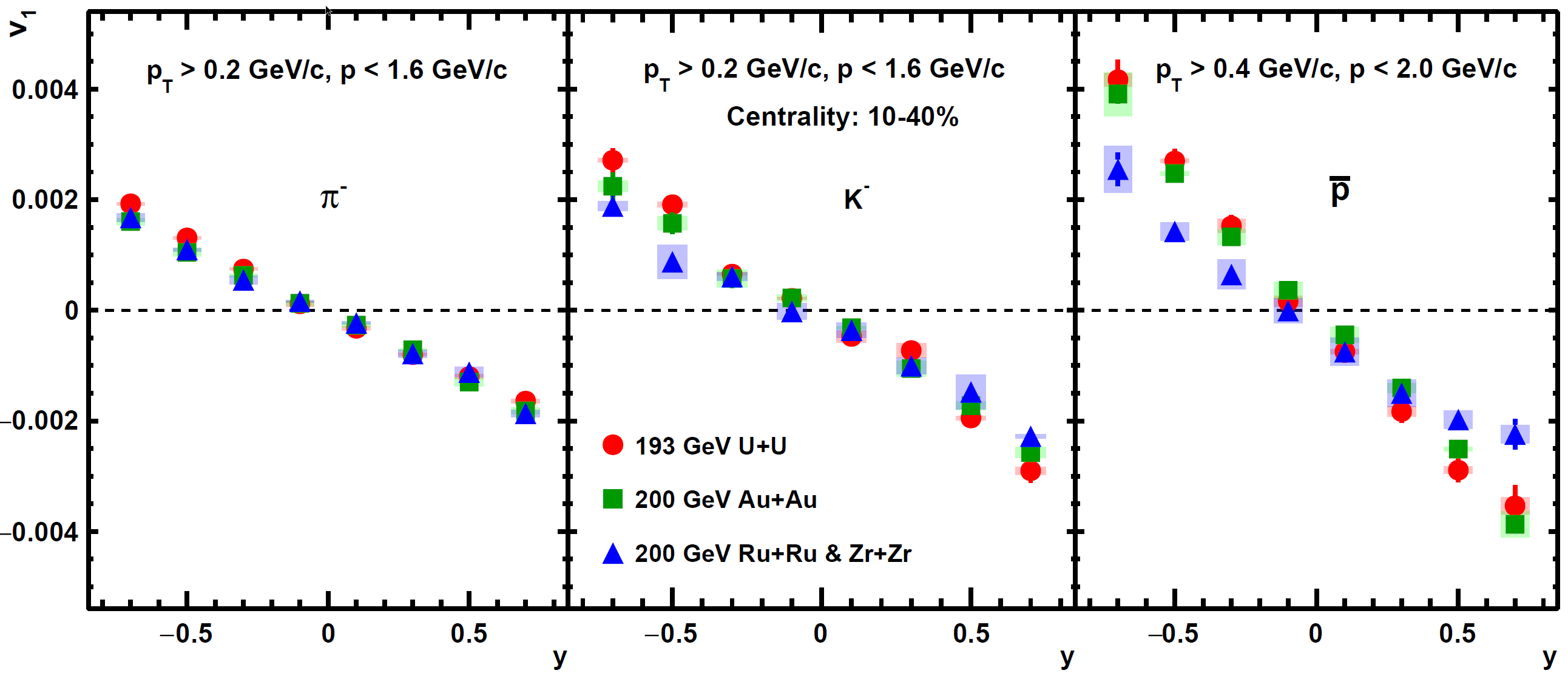
Fig 1: v1 as a function of rapidity for π±, K±, protons and anti-protons in U+U, Au+Au and isobar (Ru+Ru and Zr+Zr) collisions at √sNN = 193 and 200 GeV. Transverse momentum (pT) and total momentum in collision center-of-mass frame (p) are specified in figure legends.
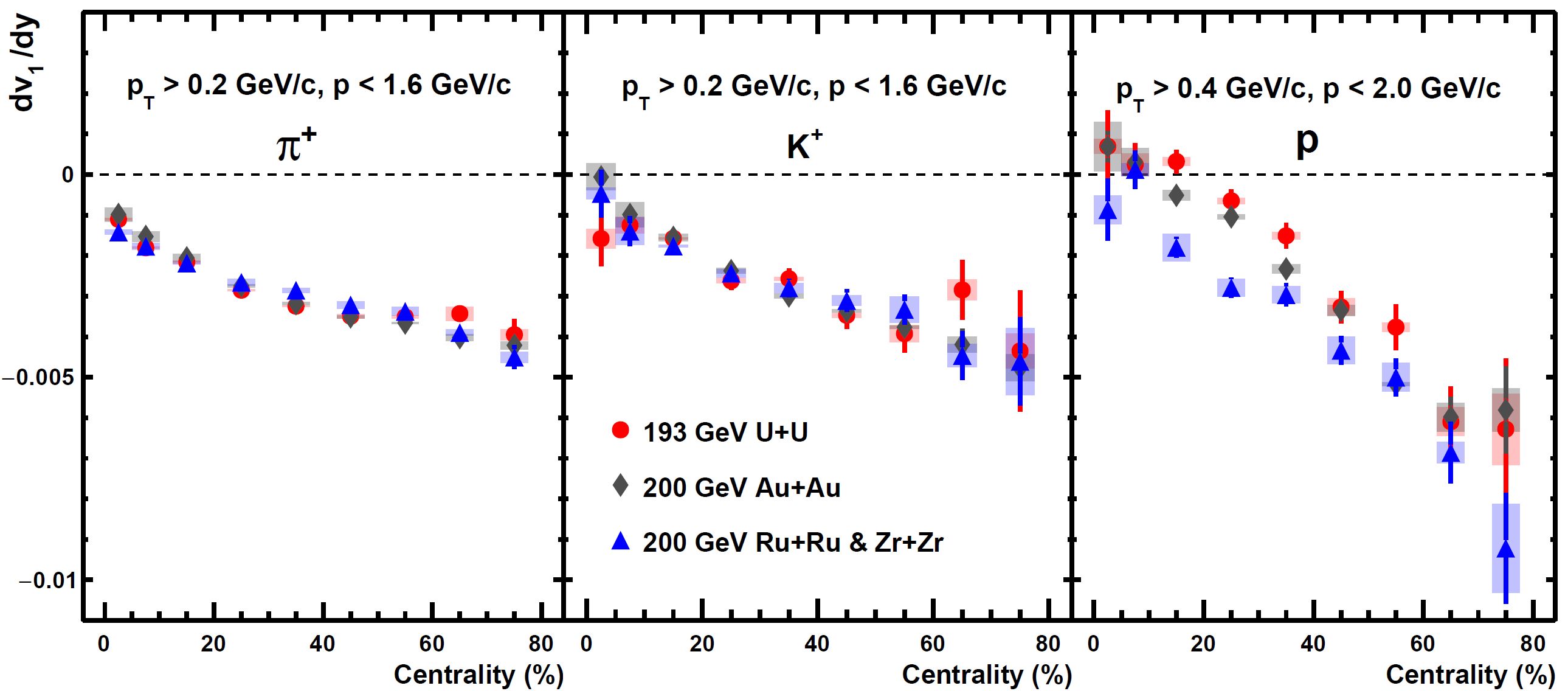
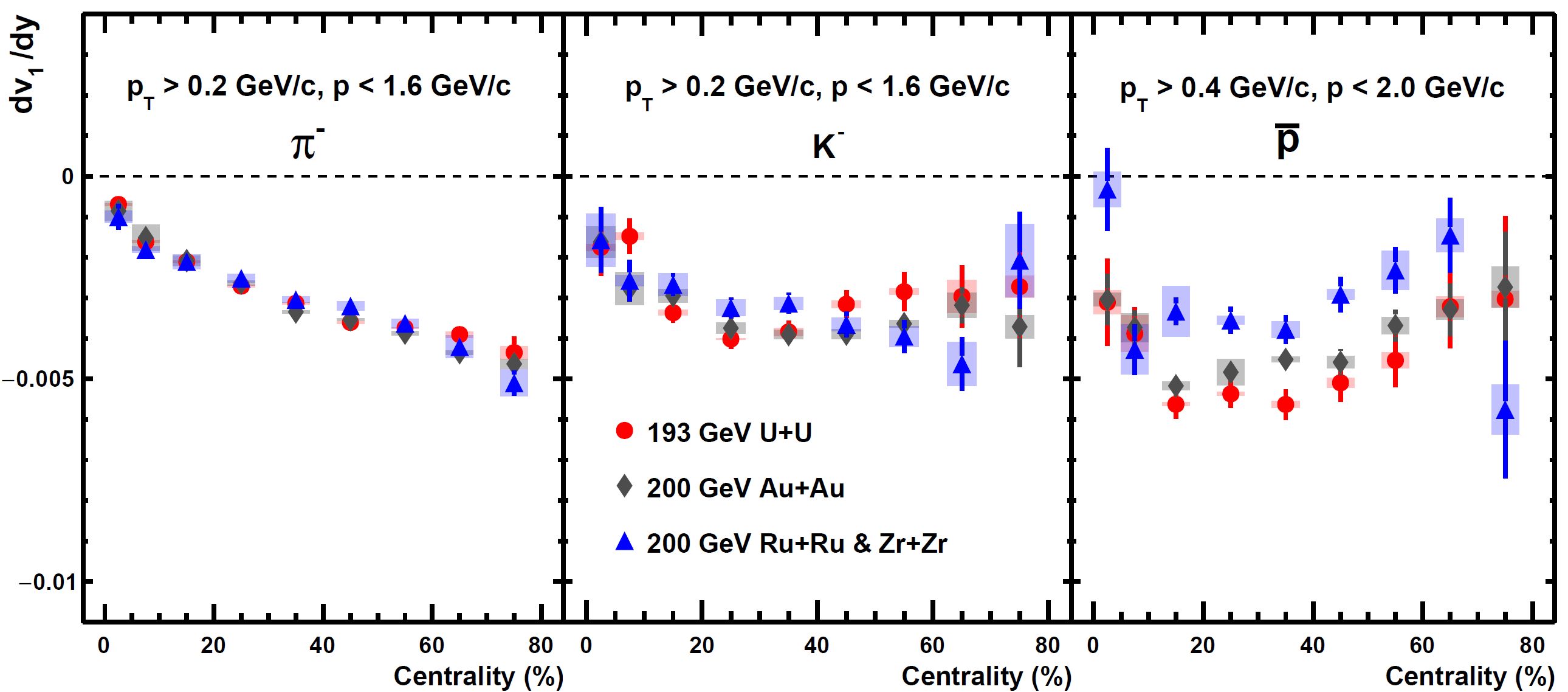
Fig 2: dv1/dy as a function of centrality for π±, K±, protons and anti-protons in U+U, Au+Au and isobar (Ru+Ru and Zr+Zr) collisions at √sNN = 193 and 200 GeV.
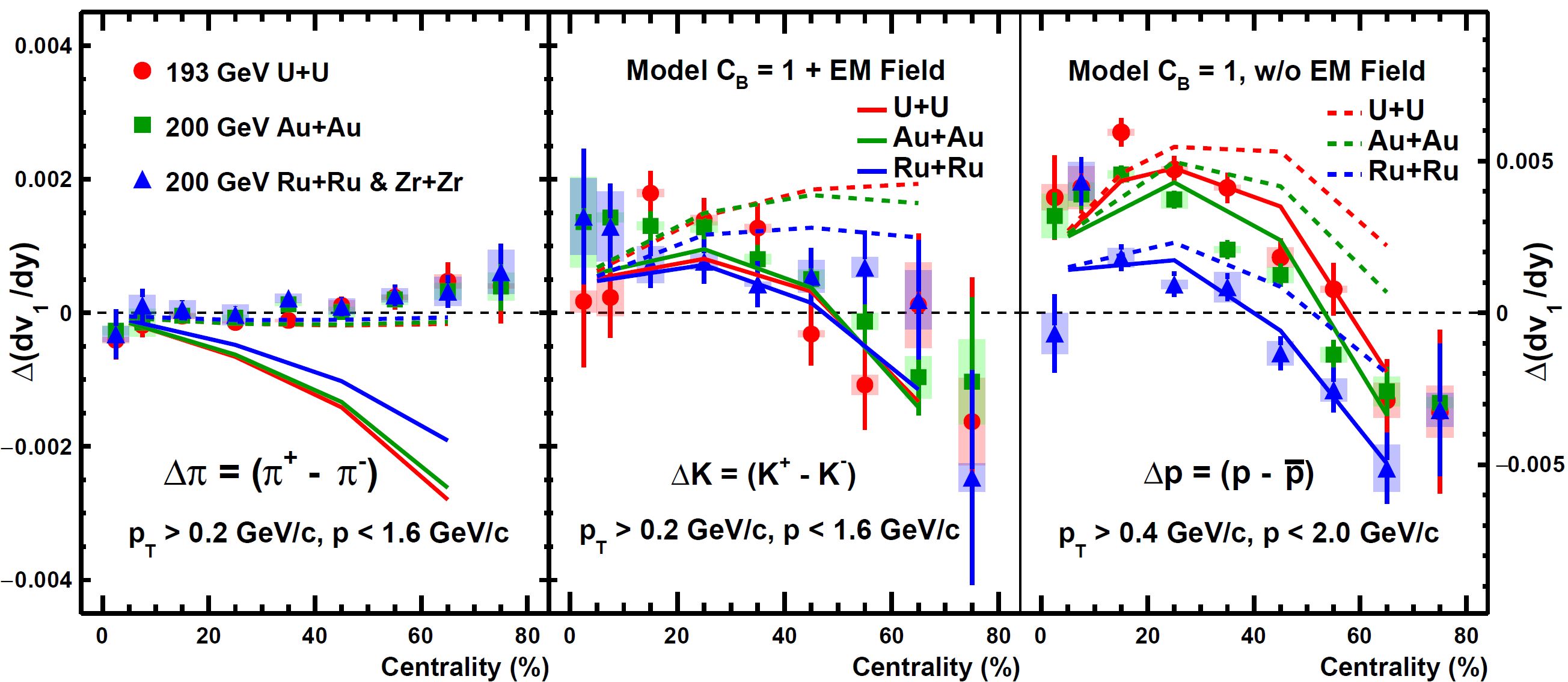
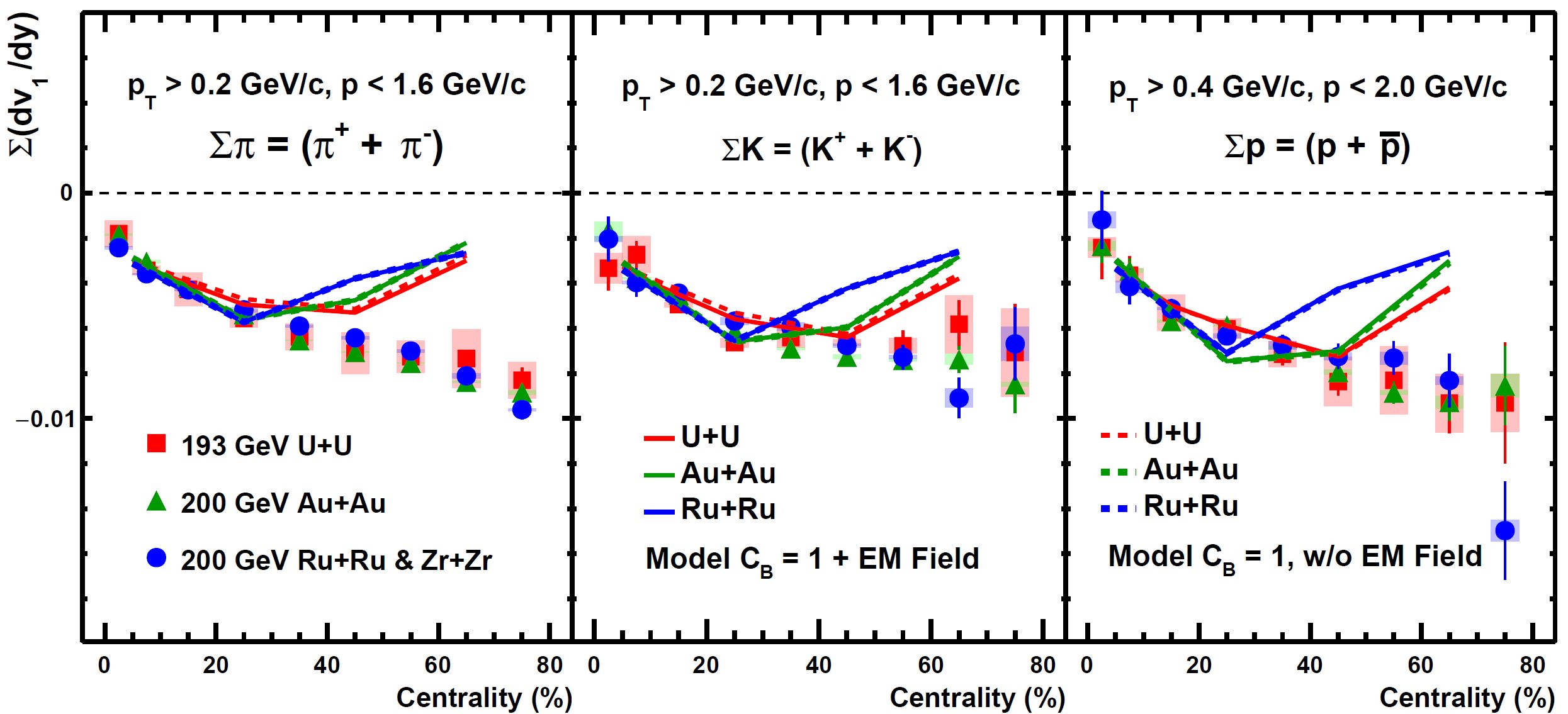
Fig 3: Δ(dv1/dy) and Σ(dv1/dy) as a function of centrality for pions, kaons and protons in U+U, Au+Au and isobar (Ru+Ru and Zr+Zr) collisions at √sNN = 193 and 200 GeV.
Analysis Note: STAR/system/files/userfiles/6641/Analysis_Note_UU_Collisions_193_GeV.pdf
Analysis Code: /star/u/mftaseer/uu_v1
Paper Proposal:
1. STAR/system/files/userfiles/6641/Finalized_PWGC_Presentation_U+U_Collisions_193_GeV_16-May-2025.pdf
2. STAR/system/files/userfiles/6641/U+U Collisions @ 193 GeV (Paper Proposal) 16_10_2024.pdf
3. STAR/system/files/userfiles/6641/FCV_Comments_U+U Collisions @ 193 GeV (Paper Proposal) 13_11_2024.pdf
Supporting documents:
SQM-2024:
STAR/system/files/userfiles/6641/Measurement of charge-dependent directed flow in STAR Beam Energy Scan (BES-II) Au+Au and U+U Collisions.pdf
FCV Meetings:
- mftaseer's blog
- Login or register to post comments
